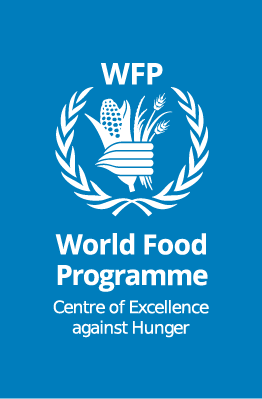
Indigenous Peoples’ Day, celebrated on 19 April, is an important date to reflect on valuing indigenous knowledge and respecting their rights, including the right to school meals adapted to their habits and customs. Within indigenous communities, the school is the place where they seek to preserve their language, culture and traditions. However, there are still challenges when it comes to school meals adapted to the communities.
The WFP Centre of Excellence against Hunger spoke to indigenous leaders during the Terra Livre Camp, the largest assembly of Brazil’s Indigenous Peoples and Organisations, which has been taking place since 2004, in Brasilia in April. In common, the leaders warned that the food provided in indigenous schools, more often than not, does not respect the cultural and dietary specificities of each people.
‘The issue of indigenous school meals is very complex. In the territories, children eat naturally, with natural foods. But the schools receive tinned and sausage products and things that are not part of the indigenous child’s daily life. This is the big question for all the leaders of the organisations,’ said Gracinha Manchineri, a specialist in Indigenous Anthropology and pedagogical director of the Amazon Centre for Indigenous Training (Cafi) of the Coordination of Indigenous Organisations of the Brazilian Amazon (Coiab).
According to her, there are some initiatives from federal government programmes, which seek to buy the food that will be served to the students directly in the territory. ‘However, it is still a very incipient initiative for the reality of indigenous peoples today,’ she says.
Wauana Manchineri, Cafi’s projects and programmes analyst, explains that the process of buying locally from indigenous people is very bureaucratic, even though there is a National Food Acquisition Programme that stipulates that at least 30% of food must be bought from the community.
‘We end up bumping into some processes in order to make this purchase. I’m on the programme’s Advisory Committee. And there, we hear a lot of realities saying that it’s food that’s not safe for children, even though they eat it every day, and it’s the most natural food possible,’ she said.
Variety
Another issue to take into account is that eating habits vary greatly according to ethnicity and region. Concita Sõpré, president of the Federation of Indigenous Peoples of the State of Pará and director of the Tatakti Kyikatêjê School (of the Gavião Kyikatêjê ethnic group), describes some of the most common foods that should be on the menu of indigenous school meals.
‘We have cassava or manioc, sweet potatoes, peanuts, açaí, Brazil nuts, we have fish and we also have our wild animals, which are also part of our people’s food chain’. Other examples of food are seeds, bananas and corn, and game meat, such as capybara and tortoises, which some ethnic groups eat, others do not.
For her, more dialogue is needed so that school meals are adapted to indigenous people. ‘The problem is that the government draws up a food project for indigenous communities, but doesn’t invite the indigenous peoples to make suggestions,’ she argues.
The importance of this dialogue is fundamental to guaranteeing healthy habits for indigenous schoolchildren. Rose Apurinã, deputy director of the Indigenous Fund of the Brazilian Amazon, explains that the traditional diet of each people has a meaning. ‘Food has to do with the strength of each people. And it has to do with preparing children for adulthood, to continue the traditional ways of life and to guarantee health,’ she said.




